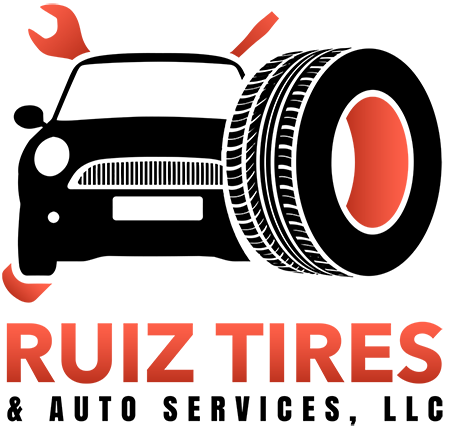Auto Repair
Whatever your reason for choosing Ruiz Tires, you’ll love what we offer. We’ve made a commitment toward customer satisfaction.
What We Do
Services
TPMS
BRAKE MAINTENANCE
TIRE REPAIR
ENGINE DIAGNOSIS
WHEEL BEARINGS
ABS
SUSPENSION
CV AXLE
BOLT JOINT
STEERING KNUCKLE
Need help with getting service?
TPMS
Tire Pressure Monitoring System: is a system in your vehicle designed to notify you when your tires are under-inflated. If the tire pressure reads too low, the TPMS light on your dashboard will illuminate to notify you of a tire’s low pressure.
Using sensors in either the valve stem of a tire or mounted on the wheel or via software, the TPMS can determine real-time tire pressure and detect when a tire’s air pressure is a specific level below the manufacturer’s recommended levels and illuminate a warning light in the dashboard.
Weather may also affect your car’s TPMS system — colder temperatures can cause a drop in tire pressure, which may be enough to set off a warning light. While driving will warm up the tires and raise the pressure, which may cause the warning light to turn off, be sure to check for tire damage or leaks, as well.
It’s also a good idea to have a manual tire pressure gauge and take readings of your tires’ pressure at least once a month.
BRAKE MAINTENANCE
Brake repair is a vital safety issue. Without properly working brakes, normal driving situations would take a turn for the worst. There are benefits in getting routine brake service and brake repair.
*Brake fluid. Stopping a car depends on hydraulics, and brake fluid is the system’s lifeline. Most vehicles don’t offer gauges or sensors to track brake fluid. Having your fluid inspected by a certified auto mechanic is crucial. Brake fluid is the most important fluid in a car.
*Brake pads. Brake pads squeeze the rotor whenever the brake pedal is pushed. Brake pads typically last between 20,000 and 40,000 miles, perhaps much longer with high quality brake pads. Listen for that squealing, otherwise you could do serious damage to your brakes repairs.
*Calipers. Part of a disc brake system, calipers push the brake pads against the rotors when the brake pedal is pushed. This resulting friction between the pads and rotors slows–and ultimately stops–the vehicle. Waiting too long to replace worn brake rotors puts extra stress on the calipers.
*Rotors. These metallic discs rotate as the wheels are in motion. Rotors sit behind the wheel assembly and can sometimes be seen through the vehicle’s rims. Pressing the brake pedal activates clamps on both sides of the rotor. Friction created during braking produces searing heat that eventually scars the rotors. Rotors should be checked during a tire rotation or multipoint inspection.
TIRE REPAIR
Our service begins with a careful inspection of your tires to determine the cause and extent of any damage. This allows us to determine if your tire can be repaired or will need to be replaced. If your flat tire is fixable, we’ll attempt to repair it by plugging or patching any punctures from the inside. If your tire can’t be repaired, we’ll let you know that it’s time to buy a new tire.
ENGINE DIAGNOSIS
An engine diagnostic is a test which is performed to learn more about why an engine is not functioning properly. The engine diagnostic is used to gather data which can be utilized in the repair of the vehicle, and it can also be used during things like emissions testing, in which a car is checked to confirm that it adheres to emissions standards for vehicles in its class.
WHEEL BEARINGS
Wheel bearings designed to support the weight of the vehicle and allow it to travel over a road with a minimum of friction. Most wheel bearings must operate in a hostile environment ranging from -40° F on a cold start-up to more than 400° F during heavy braking.
SUSPENSION
Your car’s suspension helps ensure that your drive is safe and smooth by absorbing the energy from various road bumps and other rocky impacts. It helps your tires stay in contact with the road by increasing tire friction.
The main parts of a car’s suspension include:
- Springs, which help to control the height and load of the suspension and cabin.
- Shocks absorb and dampen your tires when they contact the road.
CV AXLE
A CV axle only needs to be replaced if there is a problem with it; The most common reason to replace a CV axle is when a boot breaks and grease leaks out. If a bad CV axle is not replaced in time, it might jam while driving resulting in a safety hazard.
BOLT JOINT
ABS
Your ABS, or anti-lock braking system prevents your car’s wheels from locking up under hard braking, maintaining more control and limiting the chances of your car skidding. When you brake hard, sensors on each of the car’s wheels send messages to the engine control unit, letting it know which wheels may lock up and skid.
When you start your car, the ABS light will come on automatically. This is because your car always checks the ABS system on starting; If the light stays on, it’s a sign that there’s a problem with your car’s ABS system.
